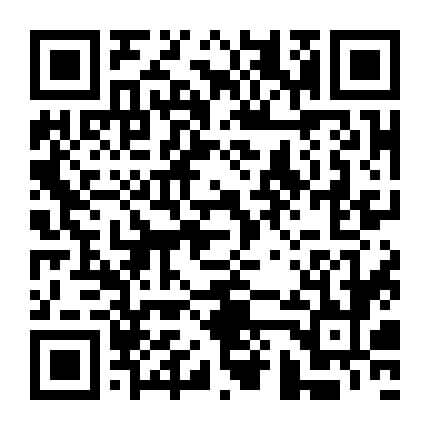2010年考研英语一阅读理解
摘要:历年考研英语真题是每一位考研学子的考研资料,对考研英语的复习至关重要。希赛网英语考试频道为大家整理了2010年考研英语一阅读理解,供大家参考学习。
Section II Reading Comprehension
Part A
Directions:
Read the following four texts. Answer the questions below each text by choosing [A], [B], [C] or [D]. Mark your answers on ANSWER SHEET 1. (40 points)
Text 1
Of all the changes that have taken place in English-language newspapers during the past quarter-century, perhaps the m ost far-reaching has been the inexorable decline in the scope and seriousness of their arts coverage.
It is difficult to the point of impossibility for the average reader under the age of forty to imagine a time when high-quality arts criticism could be found in most big-city newspapers. Yet a considerable number of the most significant c ollections of criticism published in the 20th century consisted in large part of new spaper reviews. To read such books today is to marvel at the fact that their learned contents were once deemed suitable for publication in general-circulation dailies.
We are even farther rem oved from the unfocused newspaper review spublished in England between the turn of t he 2 0th century and the eve of World War Ⅱ, at a time when newsprint was dirt-cheap and stylish arts crit icism was consi dered an ornament to the publications in which it appe ared. In those far-off days, it was taken for granted tha t the cri tics of major papers woul dwri te in detail and at length about the events they covered. Theirs was a serious business, and even those reviewers who wore their learning lightly, like George Bern ard Shaw and Ernest Newman, could be trus ted to know what they were a bout. These men believed in journalism as a calling, and were proud to be published in the daily press. “So few authors have brains enough or literary gift enough to keep their own end up in journalism, ”Newman wrote, “ that I am tempted to define‘journalism’ as ‘a term of cont empt appl ied by writers who are not read to writers who are’. ”
Unfortunately, these critics are virtually forgotten. Neville Cardus, who wrote for the Manchester Guardian from 1917 until shortly before his death in 1975, is now known solely as a writer of essays ont he game of cricket. During his l ifetime, though, he was also one of England's foremost classical-music critics, and a stylist so widely admired that his Autobiography(1947)became a best-seller. He was knighted in 1967, the first music critic to be so ho nored. Yet on ly one of his books is now in print, and his vast body of writings on music is unknown save to specialists.
Is there any chance that Cardus’s criticism will enjoy a revi val? The prospect seems remote. Jour nalistic tastes had changed long before his death, and postmodern reader shave little use for the ric hly upholstered Vicwardian prose in which he specialized. Moreover, the amateur tradition in music criticism has been in headlong retreat.
21. It is indicated in Paragraphs 1 and 2 that
[A] arts criticism has disappeared from big-city newspapers.
[B] English-language newspapers used to carry more arts reviews.
[C] high-quality newspapers retain a large body of readers.
[D] young readers doubt the suitability of criticism on dailies.
22. Newspaper reviews in England before world warⅡwere characterized by
[A] free themes.
[B] casual style.
[C] elaborate layout.
[D] radical viewpoints.
23. which of the following would Shaw and Newman most probably agree on?
[A] It is writers’ duty to fulfill journalistic goals.
[B] It is contemptible for writers to be journalists.
[C] Writers are likely to be tempted into journalism.
[D] Not all writers are capable of journalistic writing.
24. What can be learned about Cardus according to the last two paragraphs?
[A] His music criticism may not appeal to readers today.
[B] His reputation as a music critic has long been in dispute.
[C]His style caters largely to modern specialists.
[D]His writings fail to follow the amateur tradition.
25. What would be the best title for the text?
[A] Newspapers of the Good Old Days.
[B] The lost Horizon in Newspapers.
[C] Mournful Decline of Journalism.
[D] Prominent Critics in Memory.
Text 2
Over the past decade, thousands of patents have been granted for what are called business methods. Amazon.com received one for its “one-click” online payment system. Merrill Lynch got legal protection for an asset allocation strategy. One inventor patented a technique for lifting a box.
Now the nation’s top patent court appears completely ready to scale back on business-method patents, which have been controversial ever since they were first authorized 10 years ago. In a move that has intellectual-property lawyers abuzz the U.S. court of Appeals for the federal circuit said it would use a particular case to conduct a broad review of business-method patents. In re Bilski , as the case is known , is “a very big deal”, says Dennis’D. Crouch of the University of Missouri School of law. It “has the potential to eliminate an entire class of patents.”
Curbs on business-method claims would be a dramatic about-face, because it was the federal circuit itself that introduced such patents with is 1998 decision in the so-called state Street Bank case, approving a patent on a way of pooling mutual-fund assets. That ruling produced an explosion in business-method patent filings, initially by emerging internet companies trying to stake out exclusive pinhts to specific types of online transactions. Later, move established companies raced to add such patents to their files, if only as a defensive move against rivals that might beat them to the punch. In 2005, IBM noted in a court filing that it had been issued more than 300 business-method patents despite the fact that it questioned the legal basis for granting them. Similarly, some Wall Street investment films armed themselves with patents for financial products, even as they took positions in court cases opposing the practice.
The Bilski case involves a claimed patent on a method for hedging risk in the energy market. The Federal circuit issued an unusual order stating that the case would be heard by all 12 of the court’s judges, rather than a typical panel of three, and that one issue it wants to evaluate is whether it should” reconsider” its state street Bank ruling.
The Federal Circuit’s action comes in the wake of a series of recent decisions by the supreme Count that has narrowed the scope of protections for patent holders. Last April, for example the justices signaled that too many patents were being upheld for “inventions” that are obvious. The judges on the Federal circuit are “reacting to the anti_ patent trend at the supreme court” ,says Harole C.wegner, a partend attorney and professor at aeorge Washington University Law School.
26. Business-method patents have recently aroused concern because of
[A] their limited value to business
[B] their connection with asset allocation
[C] the possible restriction on their granting
[D] the controversy over authorization
27. Which of the following is true of the Bilski case?
[A] Its ruling complies with the court decisions
[B] It involves a very big business transaction
[C] It has been dismissed by the Federal Circuit
[D] It may change the legal practices in the U.S.
28. The word “about-face” (Line 1, Paro 3) most probably means
[A] loss of good will
[B] increase of hostility
[C] change of attitude
[D] enhancement of dignity
29. We learn from the last two paragraphs that business-method patents
[A] are immune to legal challenges
[B] are often unnecessarily issued
[C] lower the esteem for patent holders
[D] increase the incidence of risks
30. Which of the following would be the subject of the text?
[A] A looming threat to business-method patents
[B] Protection for business-method patent holders
[C] A legal case regarding business-method patents
[D] A prevailing trend against business-method patents
Text 3
In his book The Tipping Point, Malcolm Aladuell argues that social epidemics are driven in large part by the acting of a tiny minority of special individuals, often called influentials, who are unusually informed, persuasive, or well-connected. The idea is intuitively compelling, but it doesn’t explain how ideas actually spread.
The supposed importance of influentials derives from a plausible sounding but largely untested theory called the “two step flow of communication”: Information flows from the media to the influentials and from them to everyone else. Marketers have embraced the two-step flow because it suggests that if they can just find and influence the influentials, those selected people will do most of the work for them. The theory also seems to explain the sudden and unexpected popularity of certain looks, brands, or neighborhoods. In many such cases, a cursory search for causes finds that some small group of people was wearing, promoting, or developing whatever it is before anyone else paid attention. Anecdotal evidence of this kind fits nicely with the idea that only certain special people can drive trends
In their recent work, however, some researchers have come up with the finding that influentials have far less impact on social epidemics than is generally supposed. In fact, they don’t seem to be required of all.
The researchers’ argument stems from a simple observing about social influence, with the exception of a few celebrities like Oprah Winfrey-whose outsize presence is primarily a function of media, not interpersonal, influence-even the most influential members of a population simply don’t interact with that many others. Yet it is precisely these non-celebrity influentials who, according to the two-step-flow theory, are supposed to drive social epidemics by influencing their friends and colleagues directly. For a social epidemic to occur, however, each person so affected, must then influence his or her own acquaintances, who must in turn influence theirs, and so on; and just how many others pay attention to each of these people has little to do with the initial influential. If people in the network just two degrees removed from the initial influential prove resistant, for example from the initial influential prove resistant, for example the cascade of change won’t propagate very far or affect many people.
Building on the basic truth about interpersonal influence, the researchers studied the dynamics of populations manipulating a number of variables relating of populations, manipulating a number of variables relating to people’s ability to influence others and their tendency to be influenced. Our work shows that the principal requirement for what we call “global cascades”- the widespread propagation of influence through networks - is the presence not of a few influentials but, rather, of a critical mass of easily influenced people, each of whom adopts, say, a look or a brand after being exposed to a single adopting neighbor. Regardless of how influential an individual is locally, he or she can exert global influence only if this critical mass is available to propagate a chain reaction.
31.By citing the book The Tipping Point, the author intends to
[A]analyze the consequences of social epidemics
[B]discuss influentials’ function in spreading ideas
[C]exemplify people’s intuitive response to social epidemics
[D]describe the essential characteristics of influentials.
32.The author suggests that the “two-step-flow theory”
[A]serves as a solution to marketing problems
[B]has helped explain certain prevalent trends
[C]has won support from influentials
[D]requires solid evidence for its validity
33.what the researchers have observed recently shows that
[A] the power of influence goes with social interactions
[B] interpersonal links can be enhanced through the media
[C] influentials have more channels to reach the public
[D] most celebrities enjoy wide media attention
34.The underlined phrase “these people” in paragraph 4 refers to the ones who
[A] stay outside the network of social influence
[B] have little contact with the source of influence
[C] are influenced and then influence others
[D] are influenced by the initial influential
35.what is the essential element in the dynamics of social influence?
[A]The eagerness to be accepted
[B]The impulse to influence others
[C]The readiness to be influenced
[D]The inclination to rely on others
Text 4
Bankers have been blaming themselves for their troubles in public. Behind the scenes, they have been taking aim at someone else: the accounting standard-setters. Their rules, moan the banks, have forced them to report enormous losses, and it’s just not fair. These rules say they must value some assets at the price a third party would pay, not the price managers and regulators would like them to fetch.
Unfortunately, banks’ lobbying now seems to be working. The details may be unknowable, but the independence of standard-setters, essential to the proper functioning of capital markets, is being compromised. And, unless banks carry toxic assets at prices that attract buyers, reviving the banking system will be difficult.
After a bruising encounter with Congress, America’s Financial Accounting Standards Board (FASB) rushed through rule changes. These gave banks more freedom to use models to value illiquid assets and more flexibility in recognizing losses on long-term assets in their income statement. Bob Herz, the FASB’s chairman, cried out against those who “question our motives.” Yet bank shares rose and the changes enhance what one lobby group politely calls “the use of judgment by management.”
European ministers instantly demanded that the International Accounting Standards Board (IASB) do likewise. The IASB says it does not want to act without overall planning, but the pressure to fold when it completes it reconstruction of rules later this year is strong. Charlie McCreevy, a European commissioner, warned the IASB that it did “not live in a political vacuum” but “in the real word” and that Europe could yet develop different rules.
It was banks that were on the wrong planet, with accounts that vastly overvalued assets. Today they argue that market prices overstate losses, because they largely reflect the temporary illiquidity of markets, not the likely extent of bad debts. The truth will not be known for years. But bank’s shares trade below their book value, suggesting that investors are skeptical. And dead markets partly reflect the paralysis of banks which will not sell assets for fear of booking losses, yet are reluctant to buy all those supposed bargains.
To get the system working again, losses must be recognized and dealt with. America’s new plan to buy up toxic assets will not work unless banks mark assets to levels which buyers find attractive. Successful markets require independent and even combative standard-setters. The FASB and IASB have been exactly that, cleaning up rules on stock options and pensions, for example, against hostility form special interests. But by giving in to critics now they are inviting pressure to make more concessions.
36. Bankers complained that they were forced to
[A] follow unfavorable asset evaluation rules
[B]collect payments from third parties
[C]cooperate with the price managers
[D]reevaluate some of their assets.
37.According to the author , the rule changes of the FASB may result in
[A]the diminishing role of management
[B]the revival of the banking system
[C]the banks’ long-term asset losses
[D]the weakening of its independence
38.According to Paragraph 4, McCreevy objects to the IASB’s attempt to
[A]keep away from political influences.
[B]evade the pressure from their peers.
[C]act on their own in rule-setting.
[D]take gradual measures in reform.
39.The author thinks the banks were “on the wrong planet ”in that they
[A]misinterpreted market price indicators
[B]exaggerated the real value of their assets
[C]neglected the likely existence of bad debts.
[D]denied booking losses in their sale of assets.
40.The author’s attitude towards standard-setters is one of
[A]satisfaction.
[B]skepticism.
[C]objectiveness
[D]sympathy
Section II Reading Comprehension
Part A
Text 1
一、文章题材结构分析
本文属于文化范畴,是一篇现象解释型文章,摘自《大英在线百科全书》2007年11月由Terry Teachout写的 The Amateur as Critic,是探讨美国艺术、文化评论和新闻报道没落的,是以 1917到1975年的《曼彻斯特卫报》为讨论素材的,出题者对原文进行了删减。文章结构分为三部分,第一、二段是第一部分,提出现象:在过去的报纸中有很多高质量的文艺评论,而如今的读者会对这一事实感到惊讶;第三段为第二部分,介绍二战前夕报纸的情况;第四、五段为第三部分,转而介绍了报纸中评论的衰落。
二、试题解析
21. 文章第一、二段指出 。
[A]艺术批评已经从大城市的报纸中消失 [B]英语报纸过去常载有更多的艺术评论[C] 高质量的报纸未丧失大量的读者 [D] 年轻的读者怀疑报纸上的评论不合适
【 答案】B
【 考点】 推理引申
【 解析】本题测试考生文章前两段内容的总结概括能力。第一段只有一句话,剔除枝节内容可以很快地判断出文章的中心:the most far-reaching has been the inexorable decline in the scope and seriousness of their arts coverage.第二段具体论证以前的报纸关于艺术评论数量很多,所以 B 项是正确的。A 选项说法过于绝对,第一段中的“decline”,原文只是说“下降”,没有说“消失”(disappear)。C 项 “高质量的报纸未丧失大量的读者”,文中并未提到。D“年轻的读者怀疑报纸上的评论不合适”是强干扰项,原文 marvel 意思是“大为惊讶(常含赞叹之意)”,表明其实读者是赞同:这些评论可以在报纸上刊登的。这里的 doubt 表示怀疑,所以与 marvel意思相反。
【 补充】考生阅读题干时,需要判断出前两段是一个整体,而且纵观十年真题,不难发现出现这样的提问方式时,都是第一段是论点,第二段是论据。
22. 二战前英国新闻报纸的特点是 。
[A]主题自由 [B]风格随意 [C]布局精心 [D]观点激进
【 答案】 A
【 考点】事实细节
【 解析】根据题干中的时间提示词:World War II 我们可以定位到文章的第三段第一句话。原文中“unfocused”意思是:不集中的,散漫的,选项 A 中“free”的解释是unrestricted,所以两个词是同义词,属于同义替换。B项中“casual”的意思是:随便的;临时的;漠不关心的,这几个意思都是和文中的 in detail and at length“详细的”,serious“严肃的”,calling“对做某项工作的强烈欲望或责任感”,proud“骄傲”相矛盾的,所以不选。C 是强干扰项,“elaborate”可以替换原文中的“in detail”,但是“layout”(布局)无中生有,所以本题与原文不相符合。D 项中“radical”是“激进的”,无中生有。
23. 纽曼最有可能同意下面哪种观点?
[A]实现新闻业的目标是作家的职责。 [B]作家成为记者是值得鄙视的。[C] 作家容易被新闻业吸引。 [D]并不是所有的作家都能承担新闻写作。
【 答案】D
【 考点】 观点态度
【 解析】首先,我们根据题干中的人名 Shaw and Newman 定位到第三段结尾处。第三段末句引用了 Newman的观点“So few authors have brains enough or literary gift enough to keep their own end up in journalism, that I am tempted to define‘journalism’as‘a term of contempt applied by writers who are not read to writers who are.’”他认为拥有足够的才智可以在新闻事业上有所成就的人是如此的少,所以我们可以把答案确定为 D。A 项中“journalistic goals”(新闻业的目标),无中生有。B 项中“作家成为记者是值得鄙视的”与原文中的 proud(自豪的)相反。C 项中“作者容易被新闻业吸引”,是不对的,因为原文说的是被 define “journalism” as… 所吸引,而不是被journalism 所吸引。【 补充】需要注意的是 D 选项中 not all 属于部分否定,语气委婉,在选项中出现往往正确。
24. 从最后两段,有关卡达斯我们得知什么?
[A] 他的音乐评论也许不能吸引当今的读者。
[B]作为一位音乐评论家,他的名誉一直有争议。
[C] 他的风格符合现在的希赛网。
[D]他的作品跟不上业余爱好者的品味。
【 答案】A
【 考点】 推理判断
【 解析】根据题干定位到文章最后两段。文章第四段提到“他写的书只有一本还在版,大部分作品都不为人所知”;第五段又提到“在他去世之前,新闻业的口味就变了,后现代的读者对他的作品没有兴趣”。所以 A 选项“他的音乐评论可能对现在的读者并没有吸引力”为正确答案。注意 have little use for 相当于 not appeal to,同时本选项还有 may,这个语气委婉的词,因为正确答案语气委婉。干扰选项 B,原文没有提到他的名声有争议,所以无中生有。C 项,“他的风格符合现在的希赛网”与本段最后一句相矛盾。D 项移花接木,是利用最后一句话编造的选项。
25. 以下哪一项是本文的最佳题目?
[A] 报纸行业过去的黄金岁月 [B] 报纸行业的消失的视野
[C] 令人惋惜的新闻业的堕落 [D] 记忆中的杰出的评论家
【 答案】B
【 考点】主旨大意
【 解析】第一段说:过去这些年英语报纸上所发生的最有影响力的变化可能是艺术评论在报道范围和严肃性上的堕落(decline),符合考研阅读在第一段提出文章中心的特点。所以 B 项“报纸行业的消失的视野”符合答案。A 项“报纸行业过去的黄金岁月”,没有点出作者对现在的报纸的惋惜之情。C 项“令人惋惜的新闻业的堕落”,本选项的错误类型和 A 项一样。D 项“记忆中的杰出的评论家”,本文的中心不是怀恋过去,所以也是不正确的。
【 补充】考研阅读的文章中心通常在文章首段提出,最迟在第二段首句出现。
Text 2
26.营业方法专利最近引起了关注是因为________。
[A] 它们有限的商业价值 [B] 它们与资产分配的关系
[C] 它们的授权可能受到限制 [D] 对授权的争议
【 答案】C
【 考点】 事实细节
【 解析】 文章首段指出“在过去的 10 年,数以千计的被称为营业方法的专利获得批准。”而二段首句讲到了针对过去 10 年,目前的变化是较高专利法庭准备对营业方法专利进行缩减,由此可知,目前的变化肯定是营业方法专利最近引起关注的原因,因此,二段首句给出题目问及的原因,比对四个选项 restriction 和 sale back的意思接近,而 C 项的表达正是对二段首句的同义置换,故为正确答案。A 项是文中没有提到的,属无中生有选项;B 项利用三段首句出现的 asset allocation 设置干扰选项,既然本题是道因果细节题,依据题干的关键信息解答本题应定位到二段首句并结合一段给出的背景,所以 C 项是和题目毫不相干的信息;D 项“对授权的争议”是从十年前获得批准以来就一直受到了争议,而不是最近受关注的原因。
27.关于 Bilski 讼案下面哪个选项是正确的?
[A] 它的裁决遵循法庭的决议。 [B] 它涉及一项很大的营业交易。
[C] 它已经被联邦巡回法院驳回了。 [D] 它可能会改变美国的立法惯例。
【 答案】 D
【 考点】 推理判断
【 解析】依据题干中的关键词 Bilski case 解答本题应定位到二段末句并结合四段的相关信息。二段末句讲到了Bilski case 产生的影响“它有可能取消整个系列的专利”,而依据二段首句可知专利的授予是法庭的行为,由此可以推知,这会带来美国立法惯例的改变,再者四段二句指出了就 Bilski case 在法庭上听证形式的改变,再次验证了 D 项符合文意,为正确答案。A 项在文中没有提及,B 项是就二段倒数二句出现的 big deal 设置的干扰选项,但文中的意思是 Bilski case 是一个大案件,而没有说和 transaction 相关的信息;C 项是就二段二句中的信息设置的干扰选项,此处只说对business-method patents 进行 broad review,并不能说其被驳回,因此 C 项属推理过度。28.三段一行的“about-face”最可能的意思是________.[A] 失去善意 [B] 增加敌意 [C] 改变态度 [D] 增强尊严
【 答案】 C
【 考点】 词义句意
【 解析】解答本题的关键是依据短语所在句意与前后句意衔接的逻辑关系来推知该短语的意思。三段首句起到了承上启下的作用,二段主要讲对营业方法专利权开始进行限制,三段首句继续讲这一限制带来的影响,三段首句是一个原因状语从句,依据 because 后的句意“因为联邦巡回法院在 1998 年推出了这项专利”,而上面讲到现在对该专利又开始进行限制,由此可知,这正是种态度的改变,故 C 项符合文意为正确答案。而将 A,B,D 代入原文,均无法与上下文的语境衔接。
29.由最后两个自然段我们可以得知营业方式专利________.
[A] 不受法律挑战的影响 [B] 经常是没必要地发布
[C] 降低了对专利持有者的尊重 [D] 增加了风险的几率
【 答案】 B
【 考点】 推理判断
【 解析】本题考查对后两段中关于 business-method patents 相关信息的理解。在末段二句的例证中指出“法官们传递出太多的专利被授予了那些明显的发明”,可见 B 项是对此句的同义置换,为正确答案。A项是就四段二句设置的干扰选项,属篡改文意;C 项是对末段首句设置的干扰项,用esteem 偷换了原文中的protection;D 项是就四段首句中的 risk 编撰的无中生有选项。
30.下面哪项是文章的主题?
[A] 营业方法受到隐约的威胁 [B] 对营业方法专利持有者的保护
[C] 一项关于营业方法的法律讼案 [D] 反营业方法的流行趋势
【 答案】 A
【 考点】 主旨大意
【 解析】此题考查对全文主旨大意的准确归纳。从整个文章脉络来看,文章一段指出在过去的 10年,大量的营业方法专利获得批准;二段指出目前较高专利法庭准备对该专利权进行限制;紧接着三至五段都围绕二段的话题展开论说,三段介绍了对营业方法专利权进行限制产生重大影响的原因,自联邦巡回法院批准商业方法以来引起了对营业方法专利申请的热潮,四段、五段继续指出各方对营业方法专利的立场转变。由此可知,A 项能统领文意,为正确答案。D 项的干扰性较强,解答本题也应注意作者在引述 business-method patents 时的感情色彩,比如在二段末句中的 potential 及四段末句的 is whether 都是与 looming 相近的感情色彩,而 D 项prevailing 与该感情色彩不符且文中始终没提对 Bilski case 的判决结果,故 A 为答案,D为干扰项。B 项是就末段首句中的细节信息设置的选项,自然不能概括文意;文中用有关的 legal case 来烘托主题,因此,不能将此作为文章的主题。
Text 3
一、文章题材结构分析
本文选自Harvard Business Review(《哈佛商业评论》)2007 年2 月份的一篇题为The Accidental Influentials的文章。这篇文章讨论了社会潮流得以传播的影响因素,批驳了基于“两步传播”理论的“潮人主宰潮流”论调,提出“容易受影响的大众推动潮流传播”的观点。文章第一段引用 The Tipping Point 一书中关于社会流行的观点,并加以评论。第二段介绍该书的社会流行的理论依据。第三段至第五段通过观察日常生活人际间的相互影响,指出“两步传播”的不合理性,并提出大众推动潮流传播的观点。
31.作者引用 The Tipping Point 是为了 。
[A] 分析社会潮流的结果 [B]讨论“潮人”在传播社会潮流的作用
[C]举例论证人们对社会潮流本能的反应 [D]讨论“潮人”的基本特征
【答案】B
【 考点】 主旨大意
【 解析】文章提到 Tipping Point 这本书描述社会流行风潮是由一小部分名人引起的,然而,笔锋一转在首段末又说“it doesn’t explain how ideas actually spread.”进而引出作者对名人传播想法功能的讨论。由此 B 选项正确。而 A 项错在 consequences,文中并没有讨论社会潮流的后果问题,而是谈到社会潮流的原因(driven)。C 项利用第一段最后一句中的 intuitively 设置的干扰,但文中并没有提到人类对社会流行的直觉反应;潮人的特征属于书中的具体内容,属于就事论事,排除 D 项。
【补充】报刊杂志文章的首段通常引人入胜,目的是引出本文主题。
32.作者认为“两步传播理论”
[A]可以解决市场营销的问题。 [B]有助于解释某些流行趋势。
[C]赢得了潮人的支持。 [D]需要确凿的证据证实其可靠性。
【答案】 D
【 考点】 事实细节
【 解析】文章第二段首句“the supposed…plausible sounding but largely untested theory…”以及末句“…only certain special people can drive trends”充分说明这种理论证据不够充足。而 D 选项正确的反应了文中的内容。A 选项,原文只是提到市场营销人员接受这种“两步传播理论”,未进一步提到对它的态度,该选项属于过度推理。B选项说法过于肯定,而原文使用的是一个模糊的说法。C 选项属于无中生有。
33.研究人员最近的研究发现表明 。
[A]影响力来源于社会互动 [B]人际关系可以通过媒体加强
[C]有影响力的人有更多接触公众的渠道 [D]大多数名人受到媒体广告的关注
【答案】 A
【 考点】 推理引申
【 解析】根据题干,线索大致定位到第三四段,但是第三段并没有清晰的找到题解,而接下来的第四段,由该段最后一句清晰推理出了影响范围与社会互动的密切关系,影响能否传播下去,关键在于社会大众是否愿意互动,积极参与其中。A 选项充分的表明了这一点。B、C、D 三个选项的说法按照常识判断都可能正确,但是不是文章要阐述的内容,所以排除。
【 补充】本文并不是简单的考查研究人员观察到的事实,而是考查从事实中推出的结论,因此正确答案不容易直接选出,用排除法做题。
34.第四段划横线的词组“these people”是指那些 。
[A]在社会影响网络以外的人 [B]与影响来源几乎无关联的人
[C]受到影响又影响他人的人 [D]受到最初影响者影响的人
【答案】 C
【 考点】 词义句意
【 解析】解析:根据题干,线索定位到第四段。同过分析这个短语所在的句子,“For a social epidemic…; just howmany others pay attention to each of these people has little to do with…”此句主要表明人们是如何被别人影响进而又去影响别人的。而 C 选项恰是对这一点的正确表述。
【 补充】本题考查的是指代。指代属于考研英语中一个很容易被忽视的考点,最近是在 2005 年第一篇文章的第23题。
35.社会影响的首要动力要素是什么?
[A]被人接受的渴望 [B]影响他人的冲动 [C]受人影响的准备 [D]依靠他人的倾向
【答案】 C
【 考点】 事实细节
【 解析】根据题干,线索定位到最后一段,“那些被称为风靡全球的影响的现象的主要条件不是一小部分‘潮人’,而是一大部分容易受影响的人”,the presence not of a few influentials but, rather, of a critical mass of easily influenced people。这是作者批驳了 The Tipping Point 中的老观点后提出的新观点。A 选项未谈及渴望被人接受的问题;B 选项 impulse,属于对第四段第一句的曲解;D 选项在文章中找不到反应 rely on的依据
【 补充】本题考查细节,考查考生的细节辨别能力,注意选项与原文的同义替换。
Text 4
36.银行家抱怨,他们被迫 。
[A] 遵循不利的资产评估规则 [B] 从第三方获得付款
[C] 与制定价格的经理合作 [D] 重新评估他们的一些资产
【答案】 A
【 考点】 事实细节
【 解析】由题干关键词 complained 和 were forced 将信息定位于第一段最后两句,“银行抱怨会计准则设立者设立的规则迫使银行不得不报道大量的损失……”,也就是 A 选项的内容,选项的表达是对原文的同义替换。B项把首段尾句中的 value 改为 collect 进行了偷梁换柱。C 选项干扰选项的设置来源于首段末句:Theserules …, not the price managers and regulators would like them to fetch。其中 managers and regulators would like them to fetch 是price 的定语从句,命题人在 C 选项中玩了一个文字游戏,考查考生的断句能力。D 选项reevaluate 未提到,无中生有。
【补充】该题的干扰选项设置出现了一点新意:以往命题人从未这么直接地考查过考生的断句能力。
37.根据作者,FASB 规则的改变可能会引起 。
[A] 管理职能削弱 [B] 银行系统的复苏 [C] 银行长期的资产损失 [D] 其独立性的减弱
【答案】 D
【 考点】 事实细节
【 解析】该题难度很大,文章前三段谈到在银行家的压力下,标准的制定者开始出现妥协,对银行不利的规则有所调整,这意味着其独立性的削弱。所以 D 选项为正确答案。A 选项中的 diminish 与第三段尾句中的 enhance相矛盾。第二段末句提到银行的复苏将会非常困难,所以 B 不对。C 文章未提到。
【补充】该题属于在否定处、转折处命题,二者属于考研阅读的高频考点。
38.根据第四段,McCreevy 反对 IASB 企图 。[A] 远离政治影响 [B] 逃避来自同行的压力 [C] 按照自己的意愿制定规则 [D] 实行渐进的改革措施
【答案】 C
【 考点】 观点态度
【 解析】答案意为“独立自主的制定法规”。根据题干中的“McCreevy objects to”定位到第四段。第四段提到欧洲的部长们要求 IASB 立即根据美国的变化做出一样的反应,而IASB 不想采取行McCreevy 警告 IASB“不是处在政治真空中”而是在“现实世界里”,综上可以判断出 IASB 想自己独立制定规则,但是政客们反对。A 选项干扰性非常强,属于对 not live in a political vacuum 的曲解;B、D 选项属于无中生有,文中未提到来自同行的压力和渐进的改革。
39.作者认为银行“on the wrong planet”的原因是 。
[A] 曲解了市场价格指标 [B] 夸大了他们资产的真实价值
[C] 忽视了坏账存在的可能性 [D] 否定了他们资产出售中的市面损失
【答案】B
【 考点】 事实细节
【 解析】根据题干信息我们可以定位到第五段首句。这是一个强调结构,with…解释 banks were “on the wrong planet”的原因,也就是本题的答案。所以 B 为正确答案。干扰选项中 C 选项干扰性最大,但是,我们回原文定位,Today they argue that market prices overstate losses, because they largely reflect the temporary illiquidity of markets, not the likely extent of bad debts.不难发现 neglect 与原文的 reflect 是偷换概念。D 选项,原文未提到银行是否出售了不良资产,更未提到银行否认了这一点。
【 补充】本段充满了金融学专业术语,晦涩难懂。但是本题的命制是围绕该段的首句,即该段主题句命制的,从这个角度来说降低了对整段语言的理解的要求。
40.作者对准则设立者的态度是 。
[A] 满意 [B] 怀疑 [C] 客观 [D] 同情
【答案】 D
【 考点】 观点态度
【 解析】文章讨论了银行针对“standard-setters”的咄咄逼人的行为,在银行的游说下 standard-setters 开始妥协,调整标准的制定,使其符合银行的口味,特别是文章最后一段更是明确的表明了作者对“standard-setters”的同情。A 选项,“满意”。原文并没有提到 standard-setters 完成了作者对他们的期待,反而是对 FASB 做出了妥协,修改了规定,所以作者对他们谈不上满意。B 项“怀疑”属于对正确答案的反义干扰。C 项,文章谈到了作者对 standard-setters 的同情,已经和“客观”相悖了。
【 补充】本题考查的是考生对全文的把握能力,题目的答案不能根据文中某句话得出,必须在把握全文基础上,抓住其中的关键词句进行综合分析。
延伸阅读

考研微信公众号

考研备考资料免费领取
去领取
- 0
- 3
- 1
 专注在线职业教育24年
专注在线职业教育24年









 扫描二维码
扫描二维码
 扫描二维码
扫描二维码








